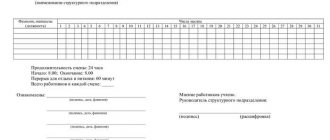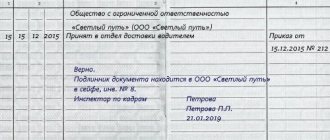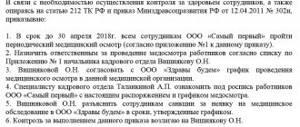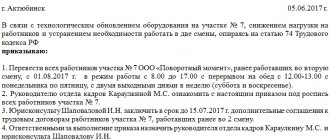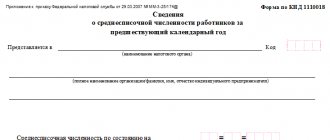First, it’s worth understanding why this assessment is needed at all. An employee works for you and works, everything is fine. Not really. It is clear that each company has its own goals and objectives, but absolutely any company that does not plan to stand still must also resolve issues of the existing competence of employees.
That is, in other words, it is important for us to learn about our employees:
- The results of their work.
- Level of professionalism at work.
- Employee potential (and it must be taken into account that a person’s potential can be different depending on the task to which it is applied).
These measurements will allow us to understand whether it is necessary to improve the employee’s qualifications, whether he is suitable for solving any of the company’s problems, or whether it is worth saying goodbye to him altogether.
The main beauty of the assessment
In order to better understand why they eat this, I will next tell you about the key goals and objectives when evaluating personnel:
- Audit. Identify the strengths and weaknesses of employees and use them for the benefit of the company;
- Education. Form a plan for the training and comprehensive development of everyone in the team;
- Promotion. Create adequate conditions and criteria for career advancement;
- Feedback. Receive continuous feedback from employees about the quality and conditions of their work.
And the audit will also help determine the current state of your company and formulate a plan for its development. In addition, if you systematically evaluate personnel and take into account the goals of personnel evaluation, then development will become constant.
Development! How amazing!
Registration and analysis of results
All assessment activities can be divided into regular or one-time. If the company has an HR department, then it develops and implements the system. You can order such services from a third party company. If an enterprise attracts workers on the basis of personnel outsourcing, then it is rational to order a check of their work in this outsourcing company.
During a quality check, a character reference is drawn up for each employee. The employer is provided with summary tables, reports with results, ratings, and scores. Recommendations are provided for each employee: his prospects in the company, benefits and effectiveness.
The results of a quantitative assessment should be made public, but a qualitative assessment should be strictly confidential. Only the HR department, manager, and experts should have access to them. Personnel decisions based on the results of the events are made by the company's management. This could be dismissals, reshuffles, assignments to study, or other options. The inspection should not become a reason for reprisals. It is a way to understand who works in the company and how, brings benefits to it and at the same time grows professionally, and who has stayed in one position and cannot prove themselves.
It is impossible to conduct a personnel assessment and not make any decisions based on its results. “For show” such events are not carried out, as they waste time, effort, finances, and distract HR officers and employees.
Types of assessment
Moving on to the evaluation criteria, we cannot leave aside such an important point as the type of evaluation.
Therefore, before I provide you with a long list of evaluation criteria, let’s understand its types.
Type 1. By employment
You can evaluate both existing personnel, including freelancers, and new ones. And more about this.
1.1 Certification of current personnel
In short, in this type of assessment you need to answer only two questions: “How economically beneficial is this or that employee for you?”, “Does he bring more profits or costs to the company?”
And both in the short and long term. It all depends on the situation in which monitoring is required.
Believe me, you will look at the same employee completely differently if you need to downsize or open a new direction.
1.2 Hiring assessment
This type of assessment is somewhat more complicated than the previous one. Here you are required to have “clairvoyant skills.” Just kidding of course. But only to convey the essence.
You don't know anything about the candidate, you have to judge only by their resume and recommendations. Therefore, it is worth approaching the criteria carefully and testing the candidate well enough so as not to make a mistake with the choice.
Use the golden rule in this matter; unfortunately, I don’t remember its author. And it sounds like this: “Hire slowly and fire quickly!”
On the topic: 1. How to find a marketer: interview questions; 2. How to find a sales manager: instructions.
Type 2. By planning
The assessment can be carried out systematically, according to a specific schedule, as needed or depending on the situation.
2.1 Planned
This type is suitable in the situation of forming a plan for promoting specialists along the career ladder.
And it is also suitable for forming a holistic view of the team’s competence when planning a new company strategy or working in a highly competitive market.
In a routine assessment, the employee has the opportunity to prepare, explore issues, and fill in gaps. And most importantly, he will understand that certification can affect his position in the company and the motivation system.
2.2 One-time
If you urgently need to make a management decision, for example, to reduce staff.
Of course, you will receive a certain cut-off for evaluation. But the weak side of this type of assessment is that you do not have a picture of the dynamics.
Perhaps an employee whose score is low on one cross-section has developed all these skills in just a week. And another specialist has a good set of skills, but has not advanced in the last couple of years.
Type 3. By method
The assessment can be carried out either manually or using special services and programs.
3.1 Manual
The manual assessment method involves personal interaction with the person doing the assessment. This can be a personal conversation, oral answers to questions, or even written, but verified by individual specialists.
When manually assessing, there is always a risk of calculation error and the possibility of bias and subjectivity.
Especially if we are talking about the fact that employees are assessed by the same employee of the company, even if it is a manager, and not an external specialist.
3.2 Automated
Automation of personnel assessment involves various tests with automatic calculation, as well as electronic emulators of various situations.
In general, all those cases where a certain program gives an impartial assessment.
With such an assessment, the degree of objectivity is much higher. However, we should not forget that there are also unmeasurable indicators or those that are difficult to translate into specific scores or levels.
Interesting...
Rules for assessing employee performance
The procedure for assessing employee performance indicators may not be useful and may turn out to be formal if a number of significant nuances are not taken into account:
- Assessment activities must be recorded in the organization’s regulatory documents (including job descriptions of employees).
- Its terms and conditions are announced in advance. It is advisable to conduct this assessment regularly.
- The performance of employees is assessed according to the most specific criteria, which makes it fair and reliable.
- New methods must be applied periodically to ensure that employees do not have the opportunity to track which parameters are important to management and fake the correct answers.
- It is advisable to involve not just one arbitrator, but several, in order to eliminate bias. But too large a crowd of experts is also undesirable: it will overwhelm the employee.
- Include in the certification list only those skills, competencies and qualities that are truly significant for this position and the business as a whole. Don't blow this list out of proportion.
- Employees of similar positions at the same structural level should be subject to the same requirements.
- Canceling or skipping staff qualification assessments is unacceptable – it reduces their value.
- The procedure must be transparent: the certification results must be communicated to both the person being certified and other employees.
- The results of the assessment should somehow affect the position of employees: lead to adjustments to current plans, personnel changes, advanced training, issuance of awards, etc. A check for the sake of checking, the results of which are put “on the table”, will not have any effect.
- Certification programs should not be used as a tool for pressure or control of personnel.
- It is necessary to involve employees of recruitment or consulting agencies in the assessment procedures, even if you have a very small company. This will raise the bar for appraisers working in the company itself and obtain an expert, reasoned opinion.
personnel performance characteristics
We will talk about the characteristics that affect the results of personnel work. This means we will take into account:
- Competencies;
- Knowledge;
- Skills;
- Behavior;
- Personality characteristics.
What is important? Take into account the specifics of the organization and the position of the employee being assessed. Next I will tell you with examples.
Example 1. When assessing ordinary employees, first of all you need to pay attention to performance characteristics: knowledge of their area of work, speed and accuracy in performing assigned tasks.
Example 2. When assessing managers, along with competence, personal qualities are also considered: the ability to make decisions and take responsibility, the ability to achieve results from subordinates, leadership qualities, etc.
Basic
Now you understand that different personnel need to be assessed differently. Now I will give the two most common groups of criteria.
1.1 Competence
That is, the knowledge, skills and abilities of the employee. At the same time, as I said above, much will depend on the position of the specialist in the company.
Often, not only knowledge and skills are assessed, but also personal characteristics that are important for the position held. The best way to assess competence is by simulating solutions to real work cases and problems.
1.2 Efficiency
In other words, the result of the work. Comparative characteristics are used: are tasks completed on time and to the extent planned, which employee is able to solve a similar volume of tasks faster, etc.
In this group of criteria, it is important to take into account point A and point B. That is, it is best to first determine target indicators, and after a certain period of time compare plan and fact.
Additional
In addition to this general division, four groups of criteria can be distinguished, which we have already mentioned in one way or another in the examples above:
- Professional. That which is directly related to the performance of the duties of a specialist, all the experience, knowledge and skills that he applies in the process of work;
- Business. Analysis of how punctual, responsible, and organized the employee is. We can call this group of criteria an approach and attitude to work;
- Psychological. Personal characteristics of a person, his characteristics: resistance to stress, ability to multitask, etc.;
- Specific. These characteristics further emphasize the individual characteristics of the employee, his state of health, and the attitude of his colleagues towards him.
Only you yourself can determine which personnel assessment indicators will become decisive for you: according to professional criteria or psychological ones, according to competence or efficiency.
There are no universal tips here. Everything comes from the priorities of your organization.
How many different criteria
How to improve employee performance
• Motivate with various bonuses
It is possible to increase employee performance indicators not only by increasing salaries. According to a study by recruiting portal Glassdoor, bonuses motivate employees much more significantly than salary increases.
• Social networks are not an enemy, but a helper
The ban on social networks on work computers has shown its ineffectiveness. The Lake Forest Graduate School of Management conducted a study showing that managers who are constantly on social media have 1.6% more deals than others. That is, social networks not only do not interfere with their work, but also increase productivity!
It would seem that Facebook should be distracting, and it would be logical to deprive employees of the opportunity to use it. But it's not that simple. No one is able to concentrate on work for eight hours straight every day - they will still need breaks to “clear their brain.” So let people chat by the water cooler, check personal emails, and check social media.
• Give freedom in the distribution of working time
Of course, employees need to be supervised, but there is a limit to everything. Robbie Slaughter, who runs the consulting firm Accelawork, offers sound advice: Let employees manage their own time, and they'll be more productive. And those who are not capable of this and need an overseer with a whip, there is no need to keep them in office. The manager’s task is to clearly formulate the goals and criteria for the quality of work.
• Allow staff to work remotely
The fact that your company rents an office for a lot of money does not mean that the entire staff must permanently sit there. Give an ill employee the opportunity to work from home: in this case, he will not infect his colleagues and will complete at least some of the tasks. Yes, even if a person is not sick, but just wants to work remotely, let him do it! An experiment at Stanford University showed that remote workers complete 9.5% more tasks than those who work from an office.
It is very convenient to organize and regulate remote work using modern CRM systems: the program stores all information, takes into account time worked and the progress of tasks, and provides clear criteria for employee performance.
• Listen to the opinions of subordinates
Communication barriers in communication between management and staff create a great risk: any, even minor, force majeure inevitably leads to downtime - after all, you need to report it to your superiors and wait for orders. David Krantz, director of the YP marketing agency, recommends responding to all emails from subordinates no later than within 24 hours and regularly communicating with the team. This advice is confirmed by statistics from Officevibe, a developer of programs for motivating employees: without feedback, four out of ten employees experience a decrease in work efficiency.
• Avoid stress
The common belief that stress mobilizes a person and makes him work more productively is not confirmed by practice. The American Institute of Stress reports that stress at work caused problems in 65% of respondents, and even caused illness in 12%. Make sure that the company has a healthy psychological climate and normal working conditions. Even little things like slow old computers and inconvenient programs irritate employees and reduce the efficiency of their work.
Sales department efficiency
We improve our work and don’t wait for problems
More details
• Praise more often
Do you want your subordinates to work better? Praise them now! At least just give verbal encouragement. The already mentioned Officevibe provides the following statistics: for 83% of employees, rewards for merit are even more important than awards and prizes.
By the way, praise from colleagues is no less important than positive feedback from superiors: 76% of respondents are motivated by compliments from colleagues. Improving work efficiency is a task not only for the manager, but also for the employees themselves.
• Discourage recycling
Equating working hours with efficiency is a mistake. According to a University of Toronto study, people who take breaks during the workday perform better than those who work without breaks.
• Invest in personnel training
Not all managers realize how important it is to improve qualifications and train staff, and save on this. And completely in vain! The American Training and Development Association confirms in its research that $900 spent on employee training leads to a 57% increase in sales.
• Monitor performance indicators
You need to know what the actual labor productivity of your subordinates is now in order to look for ways to increase it.
It is best to carry out measurements using CRM: the system will clearly show the number of new clients brought by the manager (as well as those he missed), and the total cost of his transactions, and processed applications.
Assessment methods
The evaluation criteria are clear. But in order to use them, let's define those personnel assessment tools or methods that will help to identify, count and generally evaluate them in some way.
By the way, these methods were developed both within Russian companies and on the basis of foreign experience in personnel assessment.
Quantitative
Those that allow you to count everything you can. They are considered the most objective.
Simple classification
Ranking employees from best to worst for a specific indicator. Used to solve a specific narrow issue.
Also, simple classification is used in combination with other methods.
Example: to identify a leader in the sales department, you simply need to rank all managers by the number of sales per month or the amount of revenue. This can be either an annual staff assessment or a quarterly review.
KPI method
Perhaps the most basic method of personnel assessment. And here is its essence: at the beginning of the month, certain tasks are formed for the specialist, which, as a percentage, form the final result and his salary, respectively.
And at the end of the month, the percentage of completion of all tasks is calculated, which ultimately forms the employee’s income.
On topic: KPI: 17 examples + formulas
Example: for 100% implementation of the plan, an Internet marketer will be paid 50,000 rubles. The following tasks for the month:
| Index | Plan | Fact | Indicator weight | Completion percentage |
| Unique site visitors | 1 000 | 1 000 | 25% | 25% |
| Post reaching 500 people | 15 | 10 | 30% | 20% |
| Applications from the site | 30 | 20 | 45% | 30% |
In total, the plan is 75% completed, and our marketer will receive 50,000 x 0.75 = 37,500 rubles
Rating system
Conducting a personnel assessment using this method is as follows: for each completed task, a specialist receives a certain, previously designated number of points.
And based on the results of the period, say, a month, a staff rating is formed based on the points earned.
Example: for each finished part, the machine operator receives 10 points. At the end of the month, the points are added up and we get the most productive employee.
Rank method
Top management compiles something like a personal rating for everyone in the team or department.
After which, all generated ratings are compared with each other, and those employees who are in the last positions in most ratings can be transferred to less highly paid positions, that is, become lower in rank.
Example: you have 8 seamstresses in your workshop for sewing children’s clothing. The head of the company, the head of the workshop and the senior seamstress make ratings based on the annual assessment of personnel (each independently!) and compare them.
It turns out that seamstress No. 2 and seamstress No. 7 were in last positions on all three lists. Then they can be transferred to seamstress assistants, reduce the volume of orders, or send them for additional training, transferring them to the rank of trainees.
There are so many methods, they all need to be used!
Quality
These are more complete descriptive characteristics of personnel. Often the description occurs in free form. Below I have prepared the main approaches to assessing the personnel of this group.
Questioning
The simplest qualitative research method is suitable for assessing personnel during recruitment.
Classic questions for this kind of survey: work experience, position sought, desired salary, priorities in choosing a job (salary, team, self-development, proximity to home, etc.), key skills.
Example: You need to evaluate two employees applying for the same position - beauty salon administrator.
- Candidate 1. Without experience, looking for an administrator position, wants the level of pay that you are ready to offer, but for a candidate with experience. The priority in choosing a job is proximity to home and salary level;
- Candidate 2. Has 2 years of work experience, is looking for a position with the possibility of career growth to the manager of a salon or several, resigned from a similar position due to lack of prospects.
And you, in turn, plan to change from one beauty salon to a network of salons by the end of the year. Who do you choose? Obviously, candidate 2. This simple method will allow you to evaluate the candidate when hiring.
Descriptive assessment
A simple narrative description of an employee's strengths and weaknesses is often used in conjunction with other methods to provide the most complete assessment.
The description will allow you to choose appropriate methods of encouragement, avoid conflict situations in the team and make the right management decisions.
Example: description of the profile of a staff accountant. Key competencies: more than 5 years of experience as an accountant in a company without any complaints.
Strengths: competent, punctual, attentive, active, able to argue her point of view, offers her own solutions to problems.
Weaknesses: assertive, difficult to accept criticism, not comfortable working in a team.
Matrix method
For each position, a so-called “ideal matrix” is formed, that is, a set of characteristics in percentage terms. After which a similar matrix is compiled for the employee already working in this position.
The two matrices are compared and then a conclusion is made about the employee’s suitability for a specific position. The method is good for assessing personnel during hiring.
Example: You are looking for a full-time designer. His exaggerated ideal portrait and portraits of candidates look like this:
| Competencies | “The Ideal Matrix” | Candidate – Anastasia | Candidate – Olga |
| Knowledge of Photoshop and Adobe Illustrator programs | 50% | 25% | 50% |
| Meeting deadlines for completing tasks | 20% | 40% | 10% |
| Communication skills | 15% | 10% | 25% |
| Experience in similar work | 15% | 25% | 15% |
Who will you hire? That's right, Olga. Because despite the high degree of responsibility and extensive experience working with Anastasia, Olga more closely matches your “ideal matrix” of a designer.
360 degrees
Within the framework of this method, the employee’s work is assessed by himself, his colleagues, supervisor, clients, partners or contractors with whom he interacts.
The result is the most complete picture with an understanding of growth points in the specialist’s work.
Example: colleagues, in connection with the annual personnel assessment, evaluate the employee - consultant of the toy store Vladimir, as a specialist with excellent knowledge of the assortment.
If they don’t know something about a particular toy, they will ask Vladimir, and he will definitely help.
The manager evaluates Vladimir as an executive and responsible employee who sometimes performs even those tasks that are typical for a store administrator, and not for an ordinary consultant.
Clients also speak well of Vladimir. What they appreciate about him is that he doesn’t just strive to sell a toy at a higher price, but first finds out all the child’s preferences and recommends the most suitable options in different price categories.
So, thanks to the 360-degree assessment method, we see that Vladimir has every chance of getting promoted to store administrator or senior consultant.
Group discussion
Conducting personnel assessments using this method is similar to the previous one. But the larger discussion involves the manager, the employee and, if possible, a guest expert in the field of the position being discussed.
An expert is needed for an objective, expert assessment of personnel. This method is suitable for assessing a specialist’s qualifications and identifying his attitude to work.
As part of such a discussion, you can give specific case studies to determine how an employee would behave in a similar situation.
Example: for a specialist in the logistics department: You sent a car with urgent cargo to the customer, and the driver of the car got into an accident. Your actions.
To which the employee replies that first he will find out how serious the accident occurred. Based on this, he will estimate the delivery delay time. He will contact the customer, explain the situation, and agree on a time delay. Apologizes for the inconvenience caused.
Then he will contact the driver of another car, whose route passes close to the accident site, and offer him to deliver the cargo.
From this answer you understand that the employee is responsible for his work and interacts competently with the client, looking for rational solutions without panicking.
How amazing! I will definitely try to evaluate my staff using these methods.
Combined
That is, the interaction of descriptive and quantitative methods. So, let’s look at personnel assessment tools.
Critical Situation Certification
In the company, for each employee, “correct” and “incorrect” behavior is formed in typical work situations or cases (for example, in accordance with the job description).
Next, the observer evaluates the behavior of the staff on a 5- or 10-point scale in those very “decisive” situations.
After summing up the points for solving cases within a specific period, a rating of employees is formed.
Example: for call center employees, every successful resolution of a conflict situation with a client. Where successful = the client is satisfied, does not hold a grudge against the company, is 10 points in the rating.
The method will allow you to digitize quality characteristics. Based on the results of a given period, a rating of employees is compiled, from which it is clear who most often demonstrates the “correct” behavior in resolving conflict situations.
You can assign a bonus to such a rating leader or offer training to his colleagues in communicating with a client in a stressful situation.
Scaling method
As part of the method, a list of skills, qualities, and characteristics required for the position is formed. Each item in the list is assigned a value:
- "Great";
- "Fine";
- "Satisfactorily";
- "Badly".
Or vice versa, the characteristics of a particular specialist are written down and compared with the requirements for the position on a scale:
- “Far beyond requirements”;
- “Exceeds requirements”;
- “Meets requirements”;
- “Meets some requirements”;
- “Does not meet requirements.”
This way you can assess how well this employee fits the position he or she occupies.
Example: for a hairdresser-trainee:
- Qualification – “exceeds requirements”;
- Attitude towards clients – “meet the requirements”;
- The attitude towards work is “meet the requirements”.
From which you can conclude that it is time to promote this employee from a trainee to a full-fledged hairdresser.
Grouping
Dividing the entire team into groups based on the principle of work efficiency, from those who work unsatisfactorily to those who work without complaints.
This method allows you to evaluate the effectiveness of the team as a whole. Identify areas of growth and raise the question of what to do with a group of employees whose results are low.
Please note that if you are not satisfied with the work of even a third of your employees, this is a reason to reconsider their motivation, as well as the system of professional development in the company.
Example: your company has three departments: project management – 3 people, sales – 5 people, administration – 2 people.
At the same time, 1 manager, 2 managers and 1 ACS specialist work well. The rest of the sales department employees regularly do not fulfill the plan, managers do not meet project deadlines, and the AXO specialist has budget shortfalls.
Only 40% of employees work effectively in your company.
That is, you need to review the employee motivation system (by the way, one of the motivation methods is in the video below), determine rewards and fines, and organize a system for staff development.
Criteria for assessing employee performance
To measure the productivity of staff and determine how well a particular person corresponds to his position, a number of practical criteria have been developed. Most modern professions have already developed common quality standards shared by all. Quantitative parameters are always individual.
Expert commentary
“We have a responsibility to make our customers happy in any way possible!”
Alexey Molchanov, founder of the international IT company Envybox
The current situation in the country and the world is gaining more and more momentum every day.
Today, every entrepreneur asks the question: “What will happen to my business now?”
If you succumb to general panic and “freeze” the company’s activities, then this will not lead to anything good. If you see that a crisis is inevitable and the company’s income is already beginning to decline, do not suspend your activities. Do not under any circumstances reduce your advertising costs or stop promoting (unless, of course, you are closed due to Government Decree).
Direct maximum efforts and attention to promoting your company and increasing the flow of new clients.
In order for you to have an understanding of how to behave during a crisis, I will share with you useful tools that helped us not only overcome the crisis, but also emerge victorious from it.
Below you can use simple and accessible tools for any company to attract a stable flow of new customers or return existing ones. And also, as a bonus, get free use of our services
to increase requests from the site within 7 days and a 30% discount on their connection. We wish you good luck, new clients and big sales!
- Professional competencies, skills, knowledge.
This is everything that a person can do at a professional level, his knowledge in his specialty, the ability to perform daily routine tasks. They are referred to as hard skills. This is the most obvious criterion: it is easiest to measure the results of labor and compare them with the norm in terms of quantity and quality. The level of professionalism is checked using tests, exams, industry standards, and expert assessments. - Psychological and communication qualities.
These are the so-called soft skills. Is the person prone to conflict or is he loyal and accommodating? Process or result oriented? Closed or sociable? What is the level of his leadership qualities and communication competencies? Does he know how to achieve his goals, is he able to accurately fulfill his duties and not “muddy the waters” in the team? All these difficult-to-measure personality traits determine whether a person is suitable for a position and whether he or she has career prospects.For example, a leader should not be placed in an ordinary position, where he will quickly get bored and burn out, and an obvious introvert should not be sent to the sales floor as a consultant. The strengths and weaknesses of a person, his inclinations and other psychological qualities are determined through in-depth interviews.
- Quantitative assessment of work results.
The company's management develops indicators that will be taken as the standard: business goals, sales and production plans, expected growth in profits, turnover, number of customers, LTV, etc. Then the actual results of operations are analyzed. You need to not only compare the plan with real achievements, but also figure out why they do not coincide.And only after this can you begin to think about the effectiveness of your employees. Thus, the sales plan may be disrupted not at all because managers are lazy, but for other reasons. Demanding people to achieve the intended result at any cost is simply stupid if force majeure occurs or they do not have the conditions to work normally.
The figures in the plans, by the way, are also not taken out of thin air, but are developed based on the real situation. In addition to being objective, clear, and achievable, goals must account for unforeseen changes.
- Loyalty to the organization.
It is beneficial for any company if its employees are involved and loyal: then they will hold on to their place, work more actively, and “root” for the success of the company. But the level of loyalty should be different in different positions. - Special requirements for management and expert personnel.
Separate performance assessment criteria are applied to top managers. The same applies to brilliant salesmen, leading programmers and specialists in rare professions. All these workers cannot be assessed by generally accepted standards. In order to maintain and improve business processes, it is necessary to understand the specifics of their work, the associated nuances and problems in order to develop adequate requirements.
Top 6 useful articles for managers:
- How to brainstorm among employees
- Stages of the sales funnel
- Pareto's Law in business and life
- What is traffic and how to calculate it
- Sales Conversion: 19 Reasons for Low Conversion
- Call back on the website
Step-by-step instruction
All this is good, just wonderful, you say. But how to apply it? Let's take a step-by-step look at how to conduct a staff assessment.
Step 1. Description of functions
So, the personnel assessment procedure begins with the functions of the employee. This is the starting point for understanding how well it meets the requirements, objectives and interests of the company. It can be issued in the form of a job description.
Detailed example:
Let's look at the example of a sales manager already working for you. According to the instructions, the responsibilities of a sales manager include:
- Search for clients;
- Reception and processing of incoming applications;
- Drawing up and concluding contracts;
- Transfer of the paying client to a technical specialist;
- Receiving feedback from the client.
Step 2: Define Requirements
After the functions have been formed and before proceeding directly to the question of “how to conduct a personnel assessment,” you need to determine certain indicators, be they quantitative or qualitative.
Based on these indicators, you can understand how well the employee performs the functions specified above. A prerequisite for the assessment is to communicate to the employee both his functions and the indicators for these functions.
Detailed example:
Let’s say for our manager these numbers will look like this, in order:
- Search for clients – 10 new clients per month;
- Reception and processing of incoming applications - 50% of incoming requests;
- Drawing up and concluding contracts – number of correctly executed ones = number of sales;
- Transfer of a paying client to a technical specialist – 100% of paying clients;
- Receiving feedback from the client - at least 70% of surveyed clients.
It would be great if at this step, before introducing scheduled certification, you conduct the first certification of the employee to determine his incoming indicators, that is, what results he has now according to the criteria you have identified.
Step 3: Quantitative Analysis
For an example of quantitative analysis, let's take KPI, since this is one of the main methods of personnel assessment, and determine the planned indicators. Next, you should tell your manager about these planned indicators.
It should also be explained that a planned automatic assessment will be carried out based on these quantitative indicators, and salary calculations will be carried out according to kpi, in accordance with the above indicators.
Detailed example:
Let’s say that each of the responsibilities (I wrote about them above) has a weight in the KPI of 20%.
It will be easier to track EPR indicators using a CRM system (for example, Bitrix 24 or Megaplan), where you can see the number of new clients, new contracts and sales, information about customer ratings of services and the presence or absence of missed calls.
By the way. If you decide to use Megaplan, then I have prepared a promotional code “Megastart” especially for you. It gives a 10% discount + another 14 days of free period. Just tell it to a specialist -> megaplan.ru
Step 4. Descriptive analysis
At this moment, not only quantitative indicators come into force, but also the qualitative characteristics of the specialist and the individual.
What will be your priority, qualitative or quantitative indicators, is up to you to decide. But remember, there is no such profession as “good person”!
Detailed example:
We continue to evaluate our manager. To do this, we apply the “360 degree” method.
We will interview the second department manager, the head of the company and the head of the department, several current clients, as well as technical specialists who receive a paying client from the manager to provide the service.
Step 5. Formation of an overall assessment
It is at this moment that you need to decide what is more important, quantity or quality.
Don’t forget about combined assessment methods, which in this case will come to your aid and allow you to form a complete understanding of the level of effectiveness of a particular employee.
Detailed example:
We calculate quantitative indicators based on kpi, and also obtain a general description of the employee’s qualities using the “360 degree” method.
KPI method:
- Search for clients – 6 per month;
- Reception and processing of incoming applications - 30% of requests;
- Drawing up and concluding contracts – number of correctly executed ones = number per month;
- Transfer of a paying client to a technical specialist – 100% of paying clients;
- Receiving feedback from the client based on the results of the service provided – 40% of respondents.
“360” method:
- Gets lost in conflict situations;
- Polite;
- He jokes a lot.
Step 6. Comparison with the standard
As mentioned above, in addition to assessing a specific employee, your understanding should always be what his level of effectiveness should ideally be.
At this stage, you compare the specialist’s assessment with that ideal. The matrix evaluation method will help us here. In terms of quantitative indicators, we have an “ideal” or plan.
Detailed example:
Let's compare our “ideal” matrix with the matrix of a sales manager. By the way, to compile it we took into account the results of the “360 degrees” method.
| Criteria | "Ideal" | Manager's assessment |
| Ability to reasonably resolve controversial issues | 50% | 30% |
| Politeness | 30% | 30% |
| Sense of humor | 20% | 40% |
Step 7. Final assessment
When the entire complex of assessment activities has been completed, and you have data on how it is, how it should be and how strong the gap is between these two concepts, you can conduct an audit of the assessment and correctly characterize the employee.
Detailed example:
Based on the results of the assessment audit of the same manager, we received the following indicators:
- By kpi. 75.4% of the plan was fulfilled;
- According to the matrix. There is a 20% discrepancy on two points.
Step 8. Next steps
The resulting assessment simply needs to be communicated to the employee. Discuss with him what he thinks about the result obtained and come to further steps.
Perhaps the result will be a task to improve qualifications, a change of position, or a list of growth points.
Because performance analysis alone will not bring growth. It is needed only in order to formulate the right action plan to improve the situation.
Detailed example:
We find out from our manager what prevented us from fulfilling the plan 100% and identify growth points, for example:
- Use new channels to find clients;
- Automate receiving feedback;
- Take an online course on argumentation theory.
After which we obtain the manager’s consent to these measures and determine the time frame for implementation, and also do not forget about control. Only in this way will all the previously completed 6 steps give tangible results.
WE ARE ALREADY MORE THAN 32,000 people. TURN ON
In-scale / marketing
Why do you need to track employee performance?
It is important for any employer to spend the salary fund wisely and want to be sure that each employee is worth the money that the company spends on him.
Employee performance assessment is necessary for:
- Analysis of the management system, optimal distribution of powers and tasks between team members.
- Understanding whether a particular volume of tasks is sufficient for a particular employee, and whether he copes with them.
- Determining how necessary a particular position is for the company; whether the person who occupies it makes a significant personal contribution to the success of the company.
- Establishing the correspondence of wages to the scope of duties performed.
- Finding motivation methods that will work in a given team.
- Forecasting the employee's prospects (on the basis of which a decision will be made to improve his qualifications, for example). Is it advisable to spend money on training this employee, is it in the interests of the business?
Among modern managers, the method of introducing KPIs for personnel - key indicators of labor efficiency - is quite popular.
What does this usually look like in life? The leader sets a number of goals and objectives for his subordinates. Some people cope with them, some don't. In accordance with the results, employees receive rewards: a bonus or premium for those who fulfilled the plan, and verbal gratitude for the work (or at least an attempt to complete it) for everyone else. It is assumed that such a system will ensure fair wages.
Assessing the performance of employees is of most concern not to them themselves, but to the employer, because it is he who will have to pay for their work. For example, a sales manager's income consists mainly of a percentage of closed deals, and this forces him to be active and persistent. But for an office employee such a scheme is unacceptable: he needs a stable salary (the amount of which correlates with the effectiveness of his efforts). For creative workers, which include software developers and designers, it's even more difficult. Assessing the productivity of their work through KPIs is only just becoming part of Russian practice. Usually, the size of the salary depends solely on the subjective assessment of the head of the department or the head of the company, although not all managers admit this - they usually hide it.
Read other articles on the topic of improving employee performance
Development of a KPI system: instructions and features
How to manage employees: styles, methods and mistakes Sales department effectiveness: strategies, tactics, nuances
Sales department management: how to motivate without bonuses
Improving the performance of sales managers: tools and techniques
Factors influencing the rating
The list of such factors is long. Because there was no section in my article where I would not encourage you to take into account the situation, circumstances and characteristics of a particular employee when assessing.
For convenience, we can highlight several main factors that have a greater influence on personnel assessment:
- Biological. Age and gender characteristics, mental and physical abilities, influence of weather and climatic conditions;
- Socio-economic. Labor legislation, degree of protection, level of remuneration;
- Organizational. Working conditions in the company, the tasks that are set for the employee, the resources that are available to him to solve these problems;
- Market. Unemployment level, market demand for specialists of a similar position, market saturation with these specialists or their shortage;
- Psychological. The moral state of the employee, his attitude towards work, relationships in the team. And also a sense of his own importance and belonging.
Interesting. 41% of employees (according to surveys of the largest HR portal in Russia) are ready to change jobs if they are offered a more interesting project.
It must be remembered that all these main factors of personnel assessment affect the employee in a complex manner.
In what cases is personnel assessment needed?
Russian companies usually do competency assessments not regularly, but only when necessary. Confirmation of personnel qualifications is done in the following cases:
- with staff turnover in the company;
- reduced labor productivity;
- dissatisfaction of workers with salaries, work schedules, working conditions;
- inefficiency of enterprise management;
- managing an organization without relying on statistical and analytical indicators;
- change of management, rules, goals of the enterprise.
Many companies conduct not only an assessment of the usefulness of ordinary employees, but also an assessment of the company's managers.
underwater rocks
As in any process, there are certain problems in introducing a personnel assessment system:
- Wrong choice of personnel assessment methodology. A “one-sided” approach when evaluating personnel is the most common mistake;
- Certification is divorced from employee motivation. As a result, he simply does not understand why certification is needed if it does not in any way affect the current state of affairs;
- High degree of subjectivity. Determine for yourself how to avoid this, whether third-party specialists will be involved in expert assessment of personnel;
- Inaction. After assessing the current situation, next steps should be formed based on the results obtained.
I recommend introducing assessment into the company’s work and monitoring indicators on an ongoing basis. Since one-time events will only cause resistance and additional problems in personnel assessment.
Selecting the qualities and abilities of employees
It is better to evaluate the labor efficiency of workers in the same specialty. In this case, professional qualities are similar, so they can be ignored and indicators of other groups that influence the activities of employees can be used. From these, you need to select the most important criteria for assessing personnel in the organization, for which it is possible to obtain complete information.
All indicators must be ranked in order of importance. So, for assembly shop mechanics the most important are:
- discipline;
- achieving high quality work;
- mastering advanced production methods.
Less significant will be:
- creative approach to business;
- communication skills;
And there is absolutely no need for such an employee to have:
- analytical skills;
- organizational qualities.
The work of the head of the enterprise is assessed according to other parameters. It is important for him to achieve results such as:
- Receiving a profit;
- reduction of production costs;
- increasing profitability;
- growth of the company's rating in the market.
Therefore, when selecting candidates for leadership positions, attention is paid to organizational abilities and professional skills.
When do we evaluate staff?
Evaluating employees or candidates is essentially collecting information. Moreover, such information about personnel is collected not out of scientific interest and not for the archive. What is it for?
- When hiring: to understand who you are hiring for your team.
What is the development potential of each candidate in the organization? Which of them is the most promising? HR experience and intuition are invaluable, but with a large flow of candidates, it is not always possible to devote enough time and effort to everyone. In these conditions, you can act on a hunch or turn to your favorite crystal ball for predictions, or you can use standardized methods for assessing candidates when hiring - tests with high predictive ability, allowing you to speed up the personnel selection process. - To make a choice.
Who from the working group should be sent for advanced training and who should be sent for communication skills training? Who is the “personnel ballast” here, and who is the potential leader, HiPo, genius of crisis management? - To make a decision.
For example, about encouraging or (alas) dismissing employees, about changing the motivation system. - To understand the cause of a systemic problem
in an enterprise - high staff turnover, decreased productivity, frequent conflicts in work teams. - To be aware of what is happening in the company.
For this purpose, motivation studies and satisfaction monitoring are carried out. - To improve training and professional development programs:
what to focus on in a training program for line managers? What core competencies will determine the effectiveness of an accountant in your firm? What is missing from the current curriculum?
What does it take to understand whether an employee is effective?
It is possible to comprehensively evaluate the results of work only if you have an idea of what should be—that is, of the planned indicators with which the actual level of achievement is compared. Quantitative criteria that clearly correlate with the system of material motivation rule the roost here: sales plan, number of events held, production plan. It’s good if the methods for determining employee performance are transparent, and the evaluation criteria are objective and achievable.
To determine the criteria for personnel performance, the expertise of management and specialists in the organization is needed. And when analyzing the results, it is necessary to take into account not only absolute indicators, but also dynamics over several reporting periods, and the influence of external factors. Another important component is the correctly selected assessment method. We’ll look at how to do this in the next section.
What are bonus indicators
According to the Labor Code of the Russian Federation dated December 30, 2001 No. 197-FZ (as amended on August 2, 2019), Chapter 30 “Labor Discipline”, Article 191 “Incentives for Labor”, a bonus is defined as a type of incentive to an employee from the employer for a job well done and of high quality . The bonus is an incentive payment that encourages employees to conscientiously perform their work duties. In each organization, the employer has the right to establish its own bonus system, which is fixed by a collective agreement between employees and administration. The bonus system is based on the assessment of employees based on performance results, using the bonus coefficient and key indicators, which are divided into:
- preliminary. This includes a list of conditions for receiving a bonus, a preliminary evaluation system, a work plan to improve the efficiency of indicators;
- actual. This refers to all aspects of the bonus system, determined by actual specific results, such as, for example, a report on labor productivity indicators.
Read more: How to develop a bonus system at an enterprise
The most common criteria for evaluating employees for bonuses in the form of indicators:
- quantitative, determined by analysis in the form of specific digital data as exceeding the plan or reducing the timing of work performed;
- qualitative, determined by certification of the quality of an employee’s work as a reduction in defects or improvement in service;
- economical, determined by assessing the efficiency of resource consumption - fuel, electricity, raw materials, materials;
- rational, determined by indicators of the use and development of new equipment, compliance with work process technology, and an increase in equipment load indicators.
| Name of criterion | Specific weight of criterion | Meter |
| High-quality and timely provision of personnel to the enterprise | 25 | Applications for vacancies close within 30 days |
| Completing tasks (instructions) in full, on time, without errors | 10 | Evaluated by the supervisor |
| Submitting reports on time | 15 | No claims from regulatory authorities |
| No comments from internal audit | 30 | Evaluated by auditors together with the manager |
| Maintaining staff turnover percentage at a given value | 20 | According to the acceptable percentage of staff turnover |
